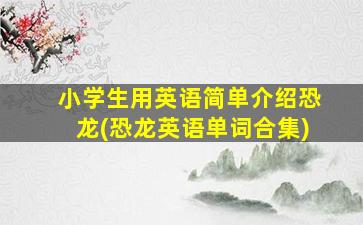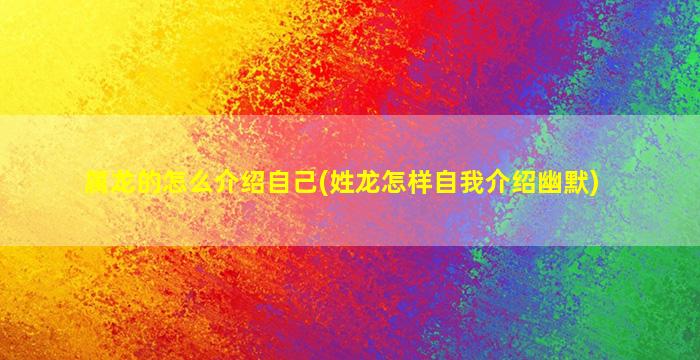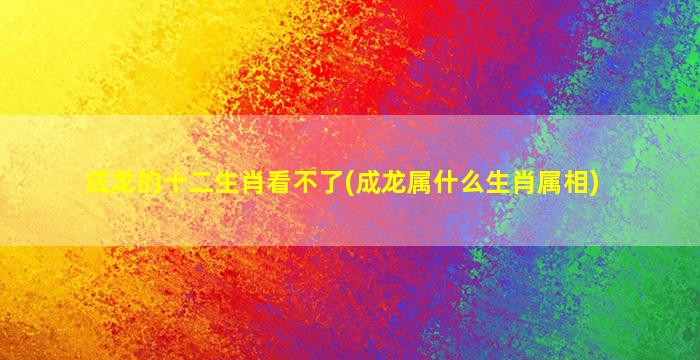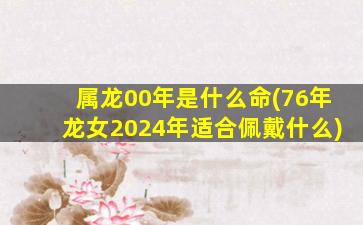用英语讲述龙的故事
原文:
M:MuseumcuratorV:Visitor
V:ThispictureweseehereisofaverytraditionalChinesedragon.
V:I'msorry,butthisdragonlooksfriendlyunlikeWesterndragonswhicharefierce.Why?
M:Why?Well,inChinadragonsarenotseeninthesamewayasinEngland.Forexample,theyarenotevil,butlucky.
V:Lucky,inwhatway?
M:Didyouknowwealsoconnectdragonswiththenumber9?And9forusisaveryluckynumber.
V:InWesterncountries7isusuallyluckyandwethink13isunlucky,butIdon'tthinkwehaveanyspecialfeelingabout9.
M:Althoughwedon'tknowtheexactorigins,wearesuretheypredatehistory.Wecanfindtheminliterature,poems,songsandarchitecture.
V:SotheyareveryimportanttoChinesepeople.right?
M:Yes,theyarepartofourconscience.
V:Inthisdisplaytheclothingisdecoratedwithdragons.Whyaretheysosignificant?
M:ThisisanimperialdragonrobefromtheQingCourt.WealsohaveaveryfamousDragonDancewhichdatesbacktotheSongdynasty,andnowadaystheDragonBoatFestivaliscelebratedinternationally.
V:Yes,lastyearIwasinChinatowninLondonandwesawthedancing,butalsoaspecialtypeofboatrace.
M:Yes,aDragonBoatrace.Itiscelebratedduringthe5thmonthoftheChineselunarcalendar.ItcommemoratesagreatpoetcalledQuYuan.
V:OK.Sowhereelsedowefinddragons?
M:Well,therearemanyfamousChinesestoriesaboutthedragon.ThereisevenafamousChineseidiom"LordYe'sLoveofDragons",whichmeansanapparentloveofsomethingonereallyfears.
V:Really?What'sthestorybehindtheidiom?
M:LordYehadafascinationaboutdragons.Hehaddragonseverywhereandhewasthinkingaboutdragonsallthetime.Hisloveofdragonsmovedarealdragon,sothedragoncametovisithimoneday.Whenhesawtherealdragon,hewasfrightenedtodeath.
V:Soyoudoagreethatdragonscanbescary,then?
M:ForLordYe,yes!
译文:
M:博物馆馆长V:参观者
M:我们看到的这张照片上是一条非常传统的中国龙。
V:可是,打断一下,这条龙看起来很友好,不像西方的龙那么凶,为什么?
M:为什么?噢,是这样,中国人与英国人对龙的看法是不一样的。比如说,龙不是邪恶的,而是吉祥的动物。
V:吉祥的?怎么吉祥?
M:你知道我们还把龙跟数字9联系在一起吗?而9对我们来说是非常吉利的数字。
V:在西方国家,通常7是幸运数字.13是不吉利的数字,但我想我们对9没有什么特别的感情。
M:尽管我们不知道龙确切的由来,但我们确信那是很早以前的历史了。在文献、诗词、歌曲和建筑中都可以发现有关信息。
V:所以龙对中国人非常重要,对吧?
M:是的,它是我们意识形态的一部分。
v:这次展览的服装上都饰有龙的图案。它们为什么那么重要?
M:这是一件清朝皇帝穿的龙袍。我们还有个非常有名的舞龙表演,可以追溯到宋朝,还有,现在世界各地都在过龙舟节。
v:没错,去年我在伦敦的中国城就看见了舞龙表演,而且还有专门的赛龙舟活动。
M:噢,有赛龙舟。那是在中国阴历5月举行的庆祝活动,是为了纪念一个叫屈原的伟大诗人。
V:好了,那么在哪儿还能找到龙?
M:是这样,中国有很多关于龙的故事,甚至还有一个成语“叶公好龙”,意思是说爱上一个实际上害怕的东西。
v:真的吗?这个典故是怎么说的?
M:有个叫叶公的人非常喜欢龙。他每时每刻想着龙:生活的周遭环境里龙的形象也是无处不在。他对龙的喜爱感动了一条真龙,所以有一天这条龙就来拜访他。可是当叶公看见真龙时,却吓得要死。
V:那你是不是也认为龙很可怕呢?
M:对叶公来说是很可怕!
(这是我找的一个关于龙的故事,不易制作,谢谢)
起个英文名字姓【龙】谢谢
Drake,男子名,词源为拉丁语名词draco,含义为“龙”。
用英语介绍龙
在中国人的节日和日常生活中,到处都能看到这个神采奕奕的形象。
Duringholidays,andineveryday-lifeoftheChinesepeople,thereisacertainmythicalfigurethatispresenteverywhere.
这就是中国龙。
Thisfigureiscalleda“sinosaurus”,ora“Chinesedragon”.
与西方文化中龙的形象不同。
ThisdragondiffersfromthedragonsintheWesterntales.
西方文化中的龙
作为一种现实中并不存在的神物,龙在华夏民族的心里占据着不可替代的位置。
Asanidol,thatisnonexistentinscienceandreality,thedragonhasapositionintheheartsoftheChinesepeoplethatisirreplaceable.
龙这种形象大约起源于新石器时代早期。
TheimageofthedragonprobablyoriginatedfromtheearlyNeolithicperiod.
传说中,华夏民族的祖先伏羲和女娲都是人面蛇身的。
ThefableisthattheChineseancestorsFuXiandNvWabothhadhumanfaceswithasnake-likebody.
当华夏民族的祖先统一中原各部落后,揉合各氏族的图腾形成了龙的形象。
ThedragonwasformedwhentheChineseancestorsunitedthevarioustribesalongtheYellowRiver,andwovetogetherthetotemimagesofalltheclans.
因此在龙的身上可以看到许多动物的影子。
Thisiswhytheimagesofmanyanimalscanbefoundinthedragon.
在中国的神话与传说中,龙的形象具有蛇身、蜥脚、鹰爪、/您正在阅读的内容来自“李晨老师教英文”公众号/蛇尾、鹿角和鱼鳞。
IntheChinesefolklore,thedragonhasasnake’sbody,alizard’slegs,aneagle’sclaws,asnake’stail,adeer’santler,andafish’sscales.
在中国人心目中,龙是一种具有超凡力量的神异动物,被中国先民作为祖神敬奉。
FortheChinese,ithaslongbeenapotentsymbolofauspiciouspower,andisthereforeworshippedreligiously.
龙还能控制天气,能兴云雨,利万物。
Itisalsoassociatedwiththeweather,asthebringerofrainandwater.
中国人常常自称为“龙的传人”。
ManyChinesepeopleoftenusetheterm“DescendantsoftheDragon”asasignofethnicidentity.
在封建社会里,龙的形象一直是皇帝和皇权的象征。
Duringthefeudalperiod,thedragonservedasthesymboloftheemperorsandimperialauthority.
历代帝王都自称是龙的化身。
Therulersofeverydynastyreferredtothemselvesastheincarnationofthedragon.
因此他们使用的物品大多都装饰有龙的图案。
Thisiswhyeverythingintheimperialpalacewasdecoratedwithdragondesigns.
据说,在清朝皇宫的主殿“太和殿”里,就装饰有大大小小12654条龙。
Itissaidthattherewere12,654dragondecorationsinthe“TaihePalace”alone,themainlobbyoftheQingDynastyimperialpalace.
太和殿金銮宝座上的龙饰
而整个皇宫里的龙,就更是不计其数了。
Consideringthis,thetotalnumberofdragonsintheentirepalacemustbecountless.
中国的民俗节日中,有不少是与龙有关的。
ManyofChina’sfolkcelebrationsaredragon-related.
如农历的二月二,是汉族的“龙抬头节”。
Forexample,February2ndoftheLunarCalendaristhe“DragonAwakeningHoliday”fortheHans.
这时正值惊蛰、春分时节,民俗认为蛰伏一冬的龙,在这一天开始抬头活动,从这以后雨水也就多起来了。
Thisoccursduringthespringequinoxseason,andpeoplebelievethisiswhenthedragonwakesupfromitswinterhibernation.
人们庆祝这个节日,祈求一年风调雨顺好收成。
Theycelebratethisholidayinhopesoffairweatherandagoodcropyieldinthecomingyear.
进入现代社会后,龙逐渐由神物演变为吉祥物。
Inmodernsociety,thedragonhasgraduallysheditsroleasanidol,andhasbecomeamascotfigure.
它以盘旋、飞腾等各种形式,在社会生活的各个方面占据着醒目的位置。
Itprancesaswellassoars,occupyingthecenterofattentioninmanysocialevents.
作为一种吉祥物,龙含有腾飞、成功、开拓、创造等寓意。
AsthemascotfigureofChina,thedragonsignifiessuccess,hardwork,andcreativity.
被认为是美丽而友好的,并且充满了智慧。
Itisconsiderednotonlybeautifulandfriendly,butalsofilledwithwisdom.
它给老百姓带来好运,给国家带来繁荣昌盛。
Itbringsgoodlucktocommonpeople,andanexpandingeconomytothecountry.
象征着人类社会与大自然的和谐相处。
Itsymbolizestheharmonythatexistsbetweencivilizationandnature.
卧虎藏龙
Crouchingtiger,hiddendragon.




















 1
1
 2
2
 3
3
 4
4
 5
5
 1
1
 2
2
 3
3
 4
4
 5
5